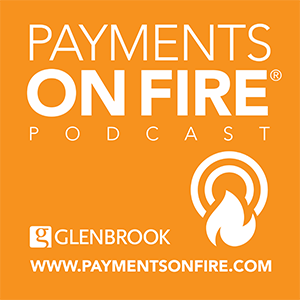Glenbrook’s Carol Coye Benson and I discussed B2B payments with Kevin Phalen of Bank of America this last week. Kevin is an Integrated Debt and Treasury Solutions Executive and joined the bank nine months ago, having previously held positions at JPMorgan Chase, First Data Corporation, MasterCard International, and Sears Credit.
Not surprisingly, Kevin’s outlook for electronic B2B payments is bullish: but we were interested in his take on the drivers of this optimism. He observes that demand for payables products that allow buyers to consolidate and optimize their outgoing payment processing is quite high among large, sophisticated firms. ERP integration (which we have long felt is the key driver) is also surfacing as top priority among BofA payables customers.
On the card front, where there is new focus on card payments for supplier transactions, the bank is experiencing 100%+ growth on certain products. The winners are those that offer greater control than a traditional ghost card, such as setting the authorization amount and placing transaction level restrictions. He commented that buyer-initiated card payments are less popular because suppliers have less control. Kevin anticipates that over the next ten years business card payments will continue to grow as the industry works to “marry up the transparency of card transactions with the low cost and ease of ACH payments.” He cautions that the card industry needs to focus on the supplier side of the transaction, where interchange sensitivity leads to resistance.
Here at Glenbrook, we are big proponents of the notion of a supplier directory where businesses large and small could post their payment preferences (e.g. “pay me by ACH, send a CTX transaction with XML ISO 20022 formatted remittance, the PO field is mandatory”). Of course, the consolidating bank environment in the United States means that large banks – such as BofA – could create quite an impressive “on-us” directory. BofA’s B2B buyer/seller network has grown from 50,000 participants last July to 75,000 today. We asked Kevin about the potential to expand this to include all of the bank’s large and small business customers – surely millions! Kevin acknowledged the attractiveness of the concept, but (as always, with B2B payments) cautioned that progress might be slow.
We discussed the ongoing struggles with remittance data management. Remittance standards continue to proliferate – STP 820 and ISO 20022 are two more recent examples – yet, as the number of networks and communication options increase, the level of complexity does, too. Kevin observes that as a result of the Obama administration’s stimulus package, the US Government may have an opportunity to drive remittance standardization. After all, it was government mandate of purchase cards in the US, UK, and Australia that led to the wide spread merchant acceptance and subsequent commercial adoption of that emerging business payment product.
Kevin (and his customers) have a keen interest in optimizing international payments. After years of work, he sees SEPA enabled initiatives finally making headway. There are setbacks along the way – as one would expect with a multi-country, multi-payment system, multi-cultural initiative – but within the next two to three years Kevin anticipates that it will be much easier for European buyers and sellers to transact with one another. Asia, on the other hand, is far from harmonized. There are many initiatives underway, yet no one unifying force to manage the complexity.
The global financial crisis is driving adoption of supply chain financial solutions from all of the global banks. Open account trade terms continue to dominate, but as companies face increasing hardship, trust between trading partners is strained. We were fascinated to hear that Kevin notes a re-emergence of letters of credit. Simultaneously, BofA has witnessed an increasing partnership between buyers and sellers, approaching the bank together to find mutually beneficial solutions that share risk, provide enhanced pre-export support, and satisfy the needs of both sides of the transaction.



